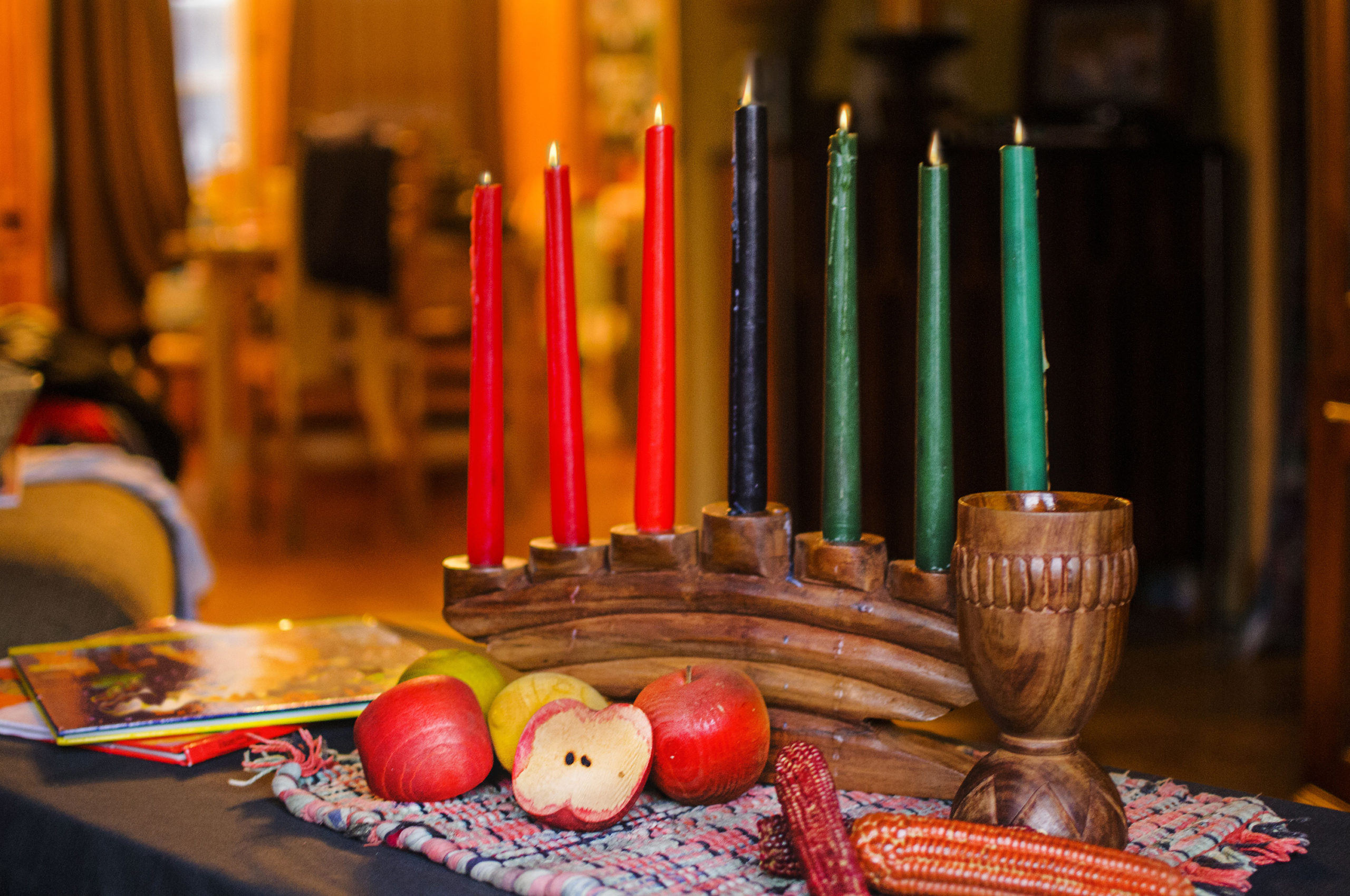It recently occurred to me that I’ve heard the phrase “Happy Kwanzaa” countless times in the past without actually knowing what it meant. I’ve always assumed that it was a holiday, but for what and for whom I couldn’t tell you. That’s why I decided that this week’s art of the holidays would be all about Kwanzaa. Which, as it turns out, is unfortunate, because Kwanzaa actually starts next Sunday. Meaning I’m a week off. But I figure this will just give you a week to get all of your preparations in order. So let’s dive in.
Kwanzaa, meaning ‘first fruits’ in Swahili, starts every year on December 26th, and runs for seven days through to January 1st. It is a fairly recent holiday, having been founded in 1966 by Maulana Karenga. Kwanzaa was created as a celebration of African family and cultural values, and while it was founded in the US and is primarily celebrated by African Americans, today it is celebrated around the world. It is also a non-religious holiday, meaning many families celebrate both Christmas and Kwanzaa.
Celebrations centre around the seven principles of Kwanzaa. Every night, a candle in the kinara is lit, and families discuss the principle of the day. These principles are umoja (unity), kujichagulia (self-determination), ujima (collective responsibility), ujamaa (cooperative economics), nia (purpose), kuumba (creativity), and imani (faith). On the sixth night, communities come together for a feast, known as the karamu, and give each other gifts, often handmade. As I said above, Kwanzaa is primarily celebrated by African Americans as a way of honouring their ancestral roots. But I also read that people of other races and backgrounds are welcome to participate. I’ll have to see if there’s any Kwanzaa celebrations happening in Paris next week, because I’d love to join a discussion on one of the seven principles. If they’ll have me of course.
I was also delighted to discover that there is a veritable treasure trove of art associated with Kwanzaa, including songs, dance pieces, comedy series, and poems. In particular, I listened to several songs that were all infectiously upbeat, read some powerful poems associated with each of the seven principles, and laughed out loud at the series Kwanzaa Actually. Seriously. Santa Kwan almost made me do a spit take. I also loved this dance piece I found from the Harlem School of the Arts. And since I still have another week before Kwanzaa starts, I’m looking forward to discovering more art of this holiday before the month is up.
One final note. It wasn’t all Kwanzaa art this week that I discovered. YouTube has apparently figured out this month’s Daily Hart topic, and its algorithm has started sending me more Christmas songs from around the world. Therefore, please enjoy “Koibito ga Santa Claus” by Yumi Matsutoya and “Lonely Christmas” by Monsta X. I love them both. Especially “Koibito ga Santa Claus”. As far as I’m concerned, all Christmas songs should have an electric guitar solo.
See you next week!
Suggestions for artists I should check out? Please contact me with your ideas. I hope you enjoyed your daily helping of art!



